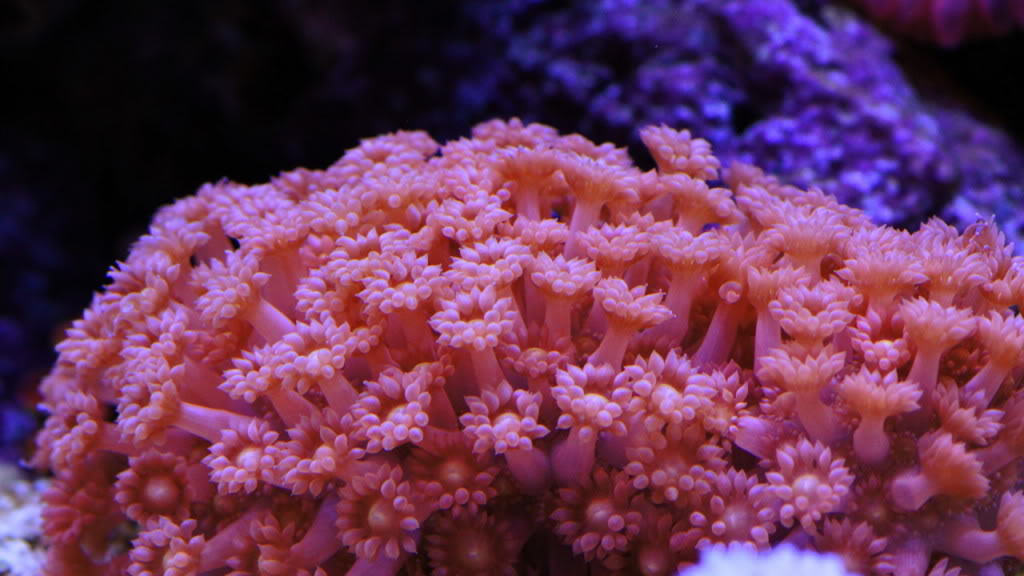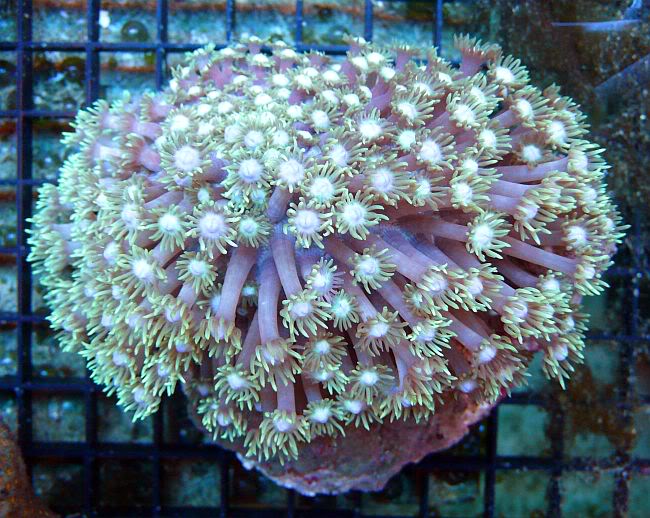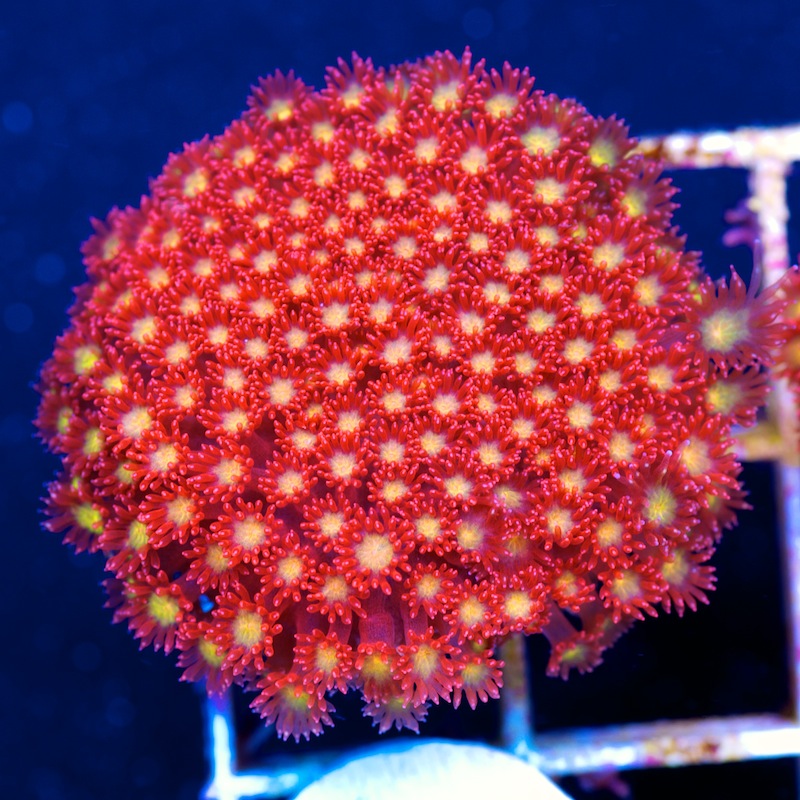Goniopora Or Goner-oh-poo? The Flower Pot Coral
Goniopora or Goner-oh-poo? The Flower Pot Coral
This is one amazingly hard to keep coral. If you are one of the few who have made it longer than a year than you are truly a supreme reefer. These are known as one of the hardest corals to keep alive…period. Generally these corals die within the first 6-12 months of captivity, but are still available across the nation to even the most beginner of hobbyist.

image via R2R member Ninjapotamus
The Flower Pot is a Large Polyp Stony coral, or LPS, from the Indo-Pacific region that grows its skeleton in the form of a mound or branch with small holes covering its surface like a golf ball. Out of each hole comes what looks like a flower with a thick stem. The polyp has 24 tentacles and a tiny dot for a mouth. The coral is green with a fleshy overtone.

Goniopora image via R2R member AquaSD.com
When opened, these corals look like a fancy patch of Anthelia or Xenia, but is not a softie by any means. This coral is also confused with Alveopora (alveopora image below), which is much easier to keep and only has 12 tentacles per polyp. Goniopora has also been known to send a sweeper tentacle out to sting any neighboring corals.

Alveopora image via R2R member reefkoi.com
In their natural habitat, the Flower Pot corals are found in shallow water that has a rather turbid current. This gives them the dancing effect that is sometimes tricky to mimic in captivity. These corals generally live by themselves on the sand bed due to their aggressive sting.
If you have had an established reef tank and are ready for a challenge, this coral is definitely a candidate for you. They are very particular in all dimensions. Like a cat, they have a set number of needs that must be met or you will be left with a goner…oh poo. Here is a quick reference to see if you can meet these corals needs:
1. A very established reef tank with a large empty spot on the sand kept between 77-84 degrees.
2. Moderate to high lighting, closer to the 6000-6700K spectrum since they live in the shallows.
3. Turbid waves, a controllable power head, surge device, or wave box is a must, however you will be utilizing the suction of the powerhead to move the coral and not the output. Essentially you want to be pulling water through it, not blowing it at the coral.
4. Regular feeding schedule of a mix of plankton and other food that is extremely small. The liquid parts of frozen foods give a good reaction from the coral, however you risk adding extra phosphates by not rinsing the food out like you would with larger mouthed coral or fish.
5. Calcium and Iron supplements to build the massive skeletal structure.
6. Supreme water quality.
If you meet these requirements you still only have a chance at being successful with one of these. The coral is extremely demanding and takes much more attention than your average LPS. If you are past the first year with your flowerpot you have overcome one of the most difficult care requirements of nearly all photosynthetic corals in the hobby. More and more information is being learned as people start getting better at keeping these fragile beauties. To see what the latest developments as they happen, go take a trip to the LPS forum and join the discussions.

image via R2R member CherryCorals.com

Leave a Reply
You must be logged in to post a comment.